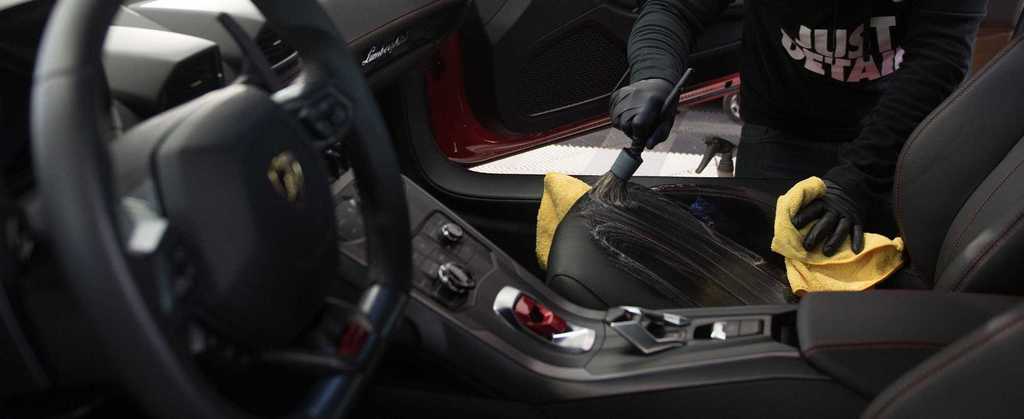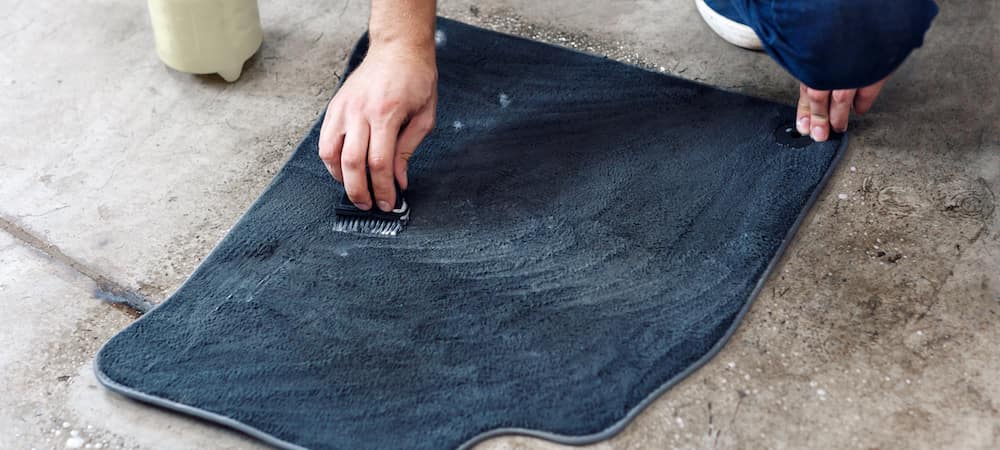It is amazing how often and how much time us car owners invest in detailing our rides. In fact, it’s estimated that the average detailing session takes about six hours to complete from start to finish. While many of us do it for the love of our valued rides, there is a financial aspect to it as well.
This leads in quite well to today’s blog subject – does detailing your car increase the vehicles value?
Will the time and money spent with frequent washes and waxes pay off when you trade it in? What exactly comes into resale value when you trade in? And what really matters when it comes to trade ins?
These are all questions that we will answer in the information below.
What Determine the Value of a Used Car?
The moment you drive off the lot – whether you own a Mercedes or Hyundai, that vehicle is considered used. As much as car dealerships like to deflect from that ‘dreaded used car’ term, with creative options like Certified Used, or Previously Purchased, you’re still dealing with a used ride.

With every mile drive, your vehicle starts to lose value. However, there are multiple factors that determine the financial value of any vehicle – whether you’re going to trade-in or sell to a private owner.
Mileage and Mechanical Condition
Companies like Kelley Blue Book and the National Automotive Dealers Association have established a series of criteria that determines depreciation a vehicle. The leading factor is the mileage and mechanical condition of the vehicle.
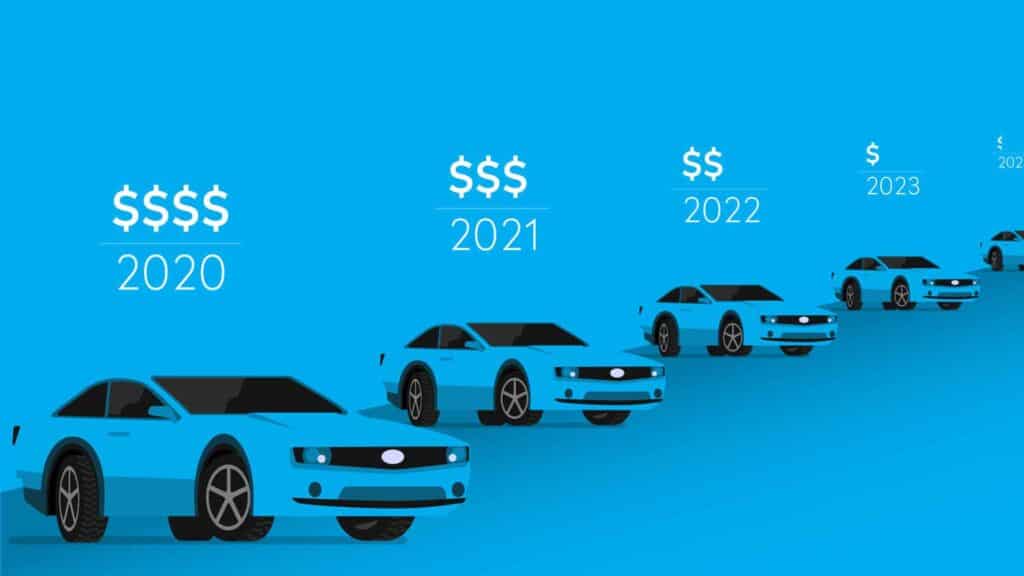
Now, there are specific guidelines that individual rating agencies use to determine the value of each year, make, and model of vehicle. They’re not too transparent about these guidelines – but there is a general rule of thumb – it’s mainly based on miles per year used.
For example, let’s assume that two, identical 2015 Ford Mustangs are being traded-in at a dealership. One of them has 100,000 miles, the other has 50,000 miles. When you average it out, car A has put 20,000 miles per year on the vehicle. While the other is half that – coming in at 10,000 mile/year average.
It simply makes sense, that the fewer miles driven, means less wear and tear. At this point, the vehicle is assigned a base value. But this leads to the second phase – which is mechanical verification.
You’ll notice that when you trade in the vehicle at a dealership, or even use a service like Carvana to trade in a vehicle, the trade-in value is finalized when it’s received a mechanical inspection.
Now, let’s be clear – the dealership or mechanic does not inspect every moving part. But, main components such as suspension parts, seals, and fluid conditions can provide the dealership with a general idea of its mechanical condition. At this point, they determine a cost of repairing problem areas, and subtract from the initial vehicle value.
The Geographic Location
Another important attribute to assigning value on a used car is its location. This is no different than any other major investment such as property. If the same situation occurs, where you have two identical vehicles, in the same condition, but one in San Diego – the other in Omaha, Nebraska – the car on the west coast is going to appreciate for a larger sum.
Vehicle Options and Trim
The next level of value is the meat and potatoes of the vehicle – or in this case, the trim options included. A few general mechanical items like All-wheel drive, a CVT or automatic transmission, and whether the vehicle is gasoline or hybrid powered will determine a higher value.

Upgrades like adding a premium audio system, infotainment displays, leather interior and such will also add a few bucks onto the resale value. However, adding aftermarket components or upgrades like performance suspension, exhaust, and even ceramic coatings or paint protection film may not always benefit you.
Exterior and Interior Appearance
Now we’re getting to some practical information. The FINAL aspect of assigning a vehicle value, whether it’s via a trade-in or for private sale, is the appearance and condition of the exterior and interior. This is where detailing a vehicle and protecting the vehicle from potential damage comes into play.

When you have that final inspection of the vehicle completed, the mechanic or appraisal manager at a dealership will inspect the paint, chrome or other polished components, trim, glass, and the interior for signs of damage. Rock chips, swirl marks, dents, and interior stains will impact the overall grade.
But what’s the price benefit? Well, that’s the problem. It’s more of a general grade as opposed to specific financial impact. However, based on the overall value of a vehicle, the aesthetic appeal of the exterior and interior of the vehicle can impact value up to 5 to 10%. If the paint is dinged up, and requires a lot of repair, this could decrease the value significantly.
How Personalizing Cars Can Hurt its Value
Modern cars, trucks, and SUVs are engineered with thousands of moving OEM parts and systems that work together to produce a desired effect. Adding aftermarket upgrades does not always add value. This is mainly due to the reality that not all aftermarket parts – or specifically, installation methods are OEM quality.
Here is a great example.

Let’s say you own a 2015 Ford Mustang. It’s equipped with a 5.0-liter engine, and you add a K&N Filters Intake, a Borla Sport Exhaust system, and have custom 20-inch chrome wheels with Pirelli P-Zero tires slapped on all four. You’ve spent more than $2,000 on upgrades, head to the dealership, and they tell you that the trade in value is LESS than OEM.
How can that be?
Well, quite frankly, the dealership has no idea who installed that Intake or Exhaust system. They don’t know if you’ve adjusted vehicle ignition timing through the ECU, fuel trim, or other important factors. In their eyes, you screwed with the genius of their OEM engineers – so why should they reward you with more money?
The same thing applies to ceramic coatings or other paint protection products. The dealership has no way of verifying how old the product is, who applied it, how it was prepped, whether you applied too little or too much, and the way you’ve kept up the maintenance.
In automotive speak – it’s an unknown variable – which does not help with increasing trade-in value.
How Detailing a Vehicle Can Improve Overall Value
As you can see from the information above, the condition of the vehicles interior or exterior is last on the list of assigning value – especially if you’re trading in the vehicle. So, if you’re making the decision to detail the vehicle frequently – just on maintaining your resale value – you’re climbing Mt Everest, in the middle of winter, with one hand tied behind your back.
Let’s put some financial data together and you tell me what you think.
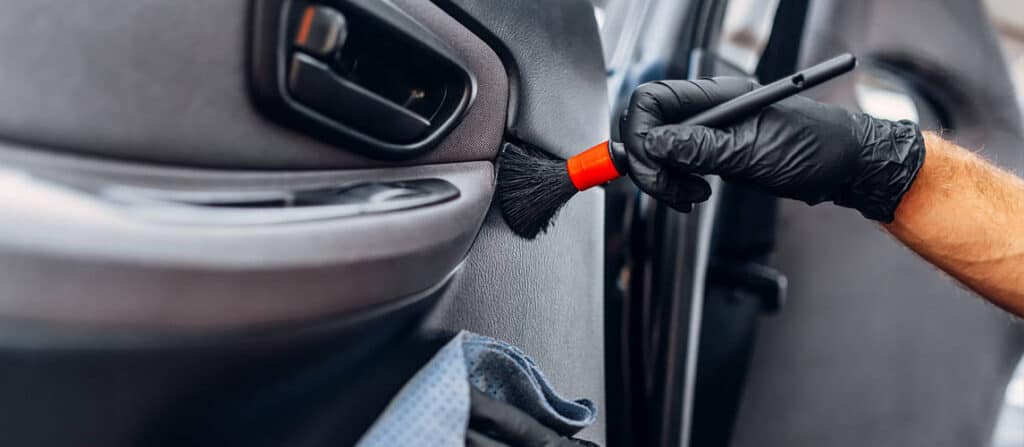
Assuming you detail your car every two weeks, and I’m talking minor detailing like hand washing, by vacuuming and cleaning the interior, and cleaning windows, it likely takes you about two hours to complete this task. Multiple this time on an annual basis, and you’ve invested more than 50 hours per year.
Now add your cleaning supplies. Most car detailing supplies will cost the average car owner about $100 per year. So – in the end, you’re not spending a lot of money to do this yourself. If you hire a detailer to come to you, that’s another discussion entirely.
To be blunt, detailing is a maintenance process. It’s what keeps the vehicle looking clean, sharp, and eye-turning. The real benefit to increasing or at least, protecting your resale value comes in paint and interior protection.
Why It’s Important to Select the Best Paint Protection Solution
As stated above, detailing is designed to enhance what you’ve currently got on the vehicle. If the paint is scratched, is faded, or damaged – all the detailing in the world is not going to help. Essentially, it’s basically polishing a turd.
The smartest solution is to ensure your ride is protected from exposure to elements that cause fading, scratching, marring, and general wear, and tear. These products are often grouped together as paint protection products.
Within this category are three contenders:
Waxes and Sealants
Waxes are an inexpensive and easy way to add some extra shine to your car, but unfortunately, only last for a few months. Meaning that best practice would be re-applying a wax every two to three months.
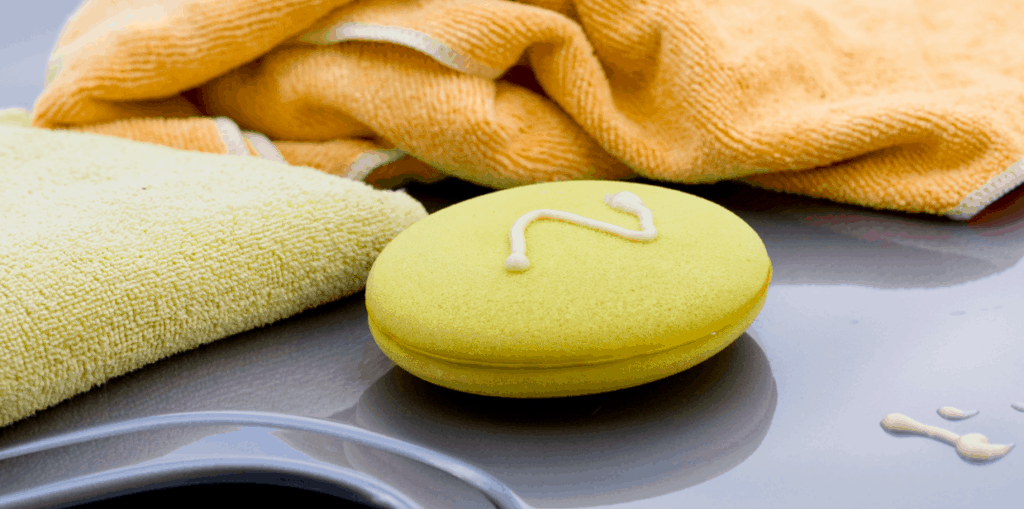
Sealants are synthetic created waxes – that last up to a year. But, the same maintenance such as removal, reapplication and repeat are required.
Ceramic Coatings
What once was a simple, one-solution, professionally applied product has morphed into possibly the most convoluted and confusion car care segment in history. Ceramic Coatings come in multiple grades, types, application techniques, and strength.
Spray on Coatings can range from Teflon-based sprays (which makes paint look shiny, slippery, and wet – but doesn’t protect against exposure very well) to SiO2 Infused sprays (which lasts longer, and provides a thin layer of protection, to the nano ceramic coating (highly-concentrated formulas that last anywhere from 2 to 5 years).

The nano ceramic coating delivers unparalleled protection and shine on a permanent basis. Sure, it takes a little bit longer to apply, and costs a little bit more, but will pay for itself quickly compared to waxes.
Within this category, you can opt for professional grade coatings (like what you’d see from Ceramic Pro dealers) or the DIY solution – like Armor Shield IX for example.
Vinyl or Paint Protection Film
The final category and most expensive is the one that offers the most protection possible. These are polymer-based wraps that can protect the OEM paint and other vehicle surfaces from rock chips, chemicals, road grime and more. While they are the highest cost – they can be removed prior to trade-in to reveal OEM paint in near perfect condition.
Wrapping it Up
Detailing a car, truck, SUV, or motorcycle should always be considered as an investment in your happiness. Driving around in ride that features deep, rich, scratch-free paint, tire shine, and polished wheels simply makes you feel better about yourself and your ride.
The key to protecting your trade in value or resale is by protecting the surface of your ride with a high-quality paint protection solution. A DIY product like Armor Shield IX can be applied to nearly every exterior part of your vehicle, including clear coating, headlight and brake covers, windows, windshield wipers, plastic trim, chrome accents, and more.





